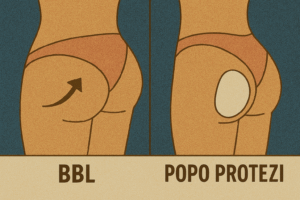The spine is one of the most important structures of our body. It supports our movements in our daily lives, protects our internal organs and keeps our body upright. However, factors such as inactivity, bad posture habits and stress in modern life can threaten our spine health. In this article, we will share exercises and tips to protect and improve your spine health.
The Importance of Spine Health
A healthy spine is not only about avoiding back pain. It also has a major impact on our overall health and quality of life. Individuals with good spinal health:
- Have a better posture
- Performs daily activities more comfortably
- Less back, neck and lower back pain
- Better sleep quality
- Deal with stress more easily
Therefore, it is very important to exercise regularly and adopt good postural habits to maintain good spinal health.
Factors Affecting Spine Health
Many factors affect the health of our spine. The main ones are
- Sedentary lifestyle
- Prolonged sitting
- Poor posture
- Excess weight
- Wrong lifting techniques
- Stress and anxiety
- Inadequate sleep
- Cigarette smoking
- Unbalanced nutrition
Many of these factors can be improved with lifestyle changes and regular exercise.
Basic Exercise Principles for Spine Health
To maintain and improve your spinal health, you should consider the following basic principles in the exercises you do:
- Regularity: Do the exercises regularly. 30-45 minute sessions, at least 3-4 times a week, are ideal.
- Gradual Progression: Start the exercises slowly and in a controlled manner. Increase the intensity and number of repetitions over time.
- Diversity: Include exercises that work different muscle groups and target different parts of the spine.
- Correct Form: Take care to perform each exercise with the correct technique. Incorrect technique can increase the risk of injury.
- Rest: Allow enough rest time between exercise days. This helps the muscles to recover and strengthen.
- Flexibility and Balance of Power: Include both flexibility and strength exercises in your program.
- Breath Control: Pay attention to regular and deep breathing during the exercises.
Basic Exercises for Spine Health
Stretching Exercises
Stretching exercises relax muscles, increase flexibility and improve blood circulation. Here are a few important stretching exercises for spinal health:
1. Cat and mouse yawn
- Stand on your hands and knees with your back straight.
- As you exhale, round your back upwards and pull your chin towards your chest (cat position).
- As you inhale, lower your belly towards the floor and lift your head up (camel position).
- Repeat this movement 10-15 times.
This exercise increases the flexibility of the spine and strengthens the back muscles.
2. Child Pose
- Sit on your knees, lower your hips towards your heels.
- Stretch your arms forward and place your forehead on the floor.
- Stay in this position for 30-60 seconds, take deep breaths.
The child's pose gently stretches the spine and relieves tension in the lower back area.
3. Spine Rotation
- Lie on your back, bend your knees and press your feet on the floor.
- Spread your arms out to the side.
- Slowly lower your knees to the right, turn your head to the left.
- Stay in this position for 30 seconds, then repeat on the other side.
This exercise increases the rotational flexibility of the spine and stretches the back muscles.
Strengthening Exercises
Strengthening exercises strengthen the muscles that support the spine and improve posture. Here are a few important strengthening exercises for spinal health:
1. Bridge Movement
- Lie on your back, bend your knees and press your feet on the floor close to your hips.
- Tighten your abs and lift your hips off the floor.
- Stay in this position for 5 seconds, then lower slowly.
- Do 10-15 repetitions.
The bridge movement strengthens the muscles of the lower back and glutes and improves spinal stability.
2. Plank
- Stand on your elbows and toes so that your body forms a straight line.
- Tighten your abdominal muscles and hold this position for 30-60 seconds.
- Do 3 sets.
The plank strengthens the core muscles and improves spinal stability.
3. Bird-Dog Movement
- Stand on your hands and knees.
- Extend your left arm forward and your right leg back.
- Hold this position for 5 seconds, then return to the starting position.
- Repeat with the other side.
- Do 10 repetitions for each side.
This movement strengthens the back and abdominal muscles, improves balance and coordination.
Cardio Exercises
Cardio exercises improve overall health and support spinal health. Here are some spine-friendly cardio exercises:
1. Swimming
Swimming is an excellent full-body exercise that puts minimal stress on the spine. It strengthens the back muscles and improves flexibility.
2. Walking
Regular walking is great for spinal health. It improves posture, increases blood circulation and reduces stress.
3. Elliptical Machine
The elliptical machine offers a low-impact cardio workout. It works the muscles of the lower and upper body while placing minimal stress on the spine.
Tips for Maintaining Spine Health in Daily Life
In addition to exercise, there are some habits that you can adopt in your daily life that can help you maintain your spine health:
Correct Sitting Posture
- Put your feet flat on the floor.
- Keep your knees at a 90 degree angle.
- Lean your back against the back of the chair.
- Relax your shoulders and pull them back.
- Keep your head straight, pull your chin in.
Regular Break
If you sit for a long time, stand up every 30-60 minutes, take a walk or do some light stretching.
Correct Lifting Technique
- Approach the object you are going to lift.
- Bend your knees, keep your back straight.
- Hold the object close to your body.
- Get up slowly using your leg muscles.
Choosing a Suitable Mattress and Pillow
Choose a medium-firm mattress and a pillow that supports your neck. If you sleep on your side, put a thin pillow between your knees.
Stress Management
Stress can lead to muscle tension and spinal problems. Do stress-reducing activities such as meditation, deep breathing exercises or yoga.
Healthy Nutrition
A diet rich in calcium and vitamin D supports bone health. In addition, foods containing omega-3 fatty acids can help reduce inflammation.
Water Consumption
Drinking enough water helps to keep the discs between the vertebrae moist and flexible.
Yoga and Pilates for Spine Health
Yoga and Pilates are excellent forms of exercise for spinal health. Both increase flexibility, strengthen core muscles and improve body awareness.
Yoga Postures
- Downward Facing Dog: Lengthens the spine and strengthens the back and leg muscles.
- Warrior I: Improves posture and strengthens leg and back muscles.
- Cat-Cow: Increases spinal flexibility, relieves back pain.
Pilates Movements
- Face Up Leg Pull: Strengthens the abdominal muscles, improves lower back flexibility.
- Prone Back Extension: Strengthens back muscles and improves spinal flexibility.
- Face Up Spine Rotation: Improves spinal rotation, works the abdominal muscles.
Conclusion
Spinal health is critical to our overall health and quality of life. You can protect and strengthen your spine with regular exercise, good postural habits and a healthy lifestyle. By incorporating the exercises and recommendations shared in this article into your daily routine, you can have a healthier spine and a better quality of life.
Remember, always consult a health professional if you have any health problems or before starting a new exercise program. Every individual is different and a program tailored to your personal needs will ensure you get the best results.
Taking care of your spine is one of the best investments you can make in the future you. Start today and feel the difference!
























